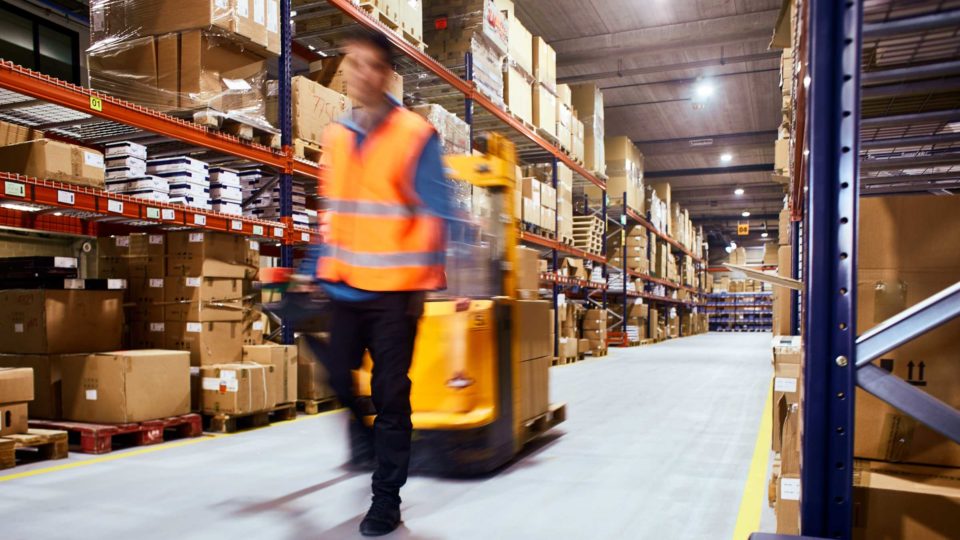Posted On February 1, 2021
They want it, and they want it now.
Or, at most, two days from now.
As direct-to-consumer (or DTC) shipping has increased steadily in recent years, so has the demand for two-day (or faster) shipping for online purchases. The rise of disruptor brands offering products only available through DTC online channels has brought new awareness of retail possibilities.
And when the pandemic shut down stores across the country, even more shoppers turned online for their needs, and DTC shipping got yet another boost. According to a recent study, 52% of DTC retailers saw a surge in demand in 2020, while 80% of traditional retailers saw sales decline.
Runs on products like personal protective equipment and household goods, combined with major backlogs in the transportation industry, made many companies realize they needed to have a back-up supply of their product to continue serving their customers.
All of these factors are causing manufacturers and retailers to examine warehousing and distribution services and DTC shipping as a preferred method of serving customers. By working with third-party logistics partners to house inventory in multiple locations around the country and take care of distribution, companies who once relied solely on wholesaling or shipping from their headquarters can provide faster shipping and, in turn, see better customer satisfaction.
Direct-to-Consumer Shipping: Optimizing Your DTC System
There’s a growing shift to a direct-to-consumer model among e-commerce, B2C and even B2B companies. Keep reading to learn how to optimize your distribution and fulfillment.
Warehousing Requirements
First and foremost, creating the right DTC shipping configuration starts with the warehousing conditions your product requires. FDA approval, climate control and fireproof spaces are common requirements for food and consumer packaged goods, as well as a warehouse that can fit the amount of inventory a company will need to store.
And don’t forget that old real estate adage—location, location, location. Often, distribution centers near major airport hubs provide a big advantage. The length of time you’ll need to store goods (for example, long-term storage vs. a storage distribution model) will likely also influence location.
Tech Solutions
Picture this: your company signs a deal with a distribution partner, transports goods to a few warehouses in strategic parts of the country, and then sits back to… have no idea about what’s going on.
This is where the right supply chain technology comes into play. Not only do companies need to be able to easily share order information with the fulfillment team so that orders can be fulfilled, they also need to have visibility into the fulfillment team’s warehouse management system, or WMS. Ideally, the WMS integrates with the company’s TMS, or transportation management system, for seamless inventory and order handling.
Adequate technology platforms are helpful for companies storing five SKUs or 500 SKUs—but if your company is one of the latter, superior technology is a must.
Fulfillment Brand Standards
Outsourcing distribution to a partner can mean letting go of some responsibility, but it doesn’t have to mean letting standards slip. The right direct-to-consumer distribution partner will adapt its operations to mirror yours, from the time cutoff same-day orders are fulfilled to which carrier is used for what type of shipments.
That’s right—the benefits of a TMS don’t have to go away when shipping with a DTC model. Fulfillment partners should be able to access your TMS to ensure you are using the best carriers and rates for every shipment.
At Flat World, we talk about this by saying our team members “wear our clients’ shirts.” It’s a metaphor to show how we work as if team members are employees of our clients and are held to their unique standards, but sometimes it’s literal, too. Walk into a Flat World warehouse and you might see a t-shirt or two from our clients.
Pricing
When you go on vacation, do you choose an all-inclusive resort that’s easy and up-front or prefer an a la carte situation to know exactly what you’re paying for? Fulfillment partners often work the same way, and unfortunately, companies expecting to pay one amount are often surprised when they get the invoice.
Many of Flat World’s clients have seasonal fluctuations in inventory and distribution needs, so the required shelf space changes depending on the time of year. Other clients only need warehousing for a few months and fulfill orders on their own for the rest of the year. Before signing with a warehousing partner, consider your business’ unique needs.
DTC Shipping & Data
Like so many other links in the supply chain, accurate and thorough data is key to choosing the best options for warehousing/distribution and direct-to-consumer shipping.
If you need help translating your data into actionable warehousing and distribution insights or have questions about fulfillment, reach out — the Flat World team can help find the best solutions for your company.

